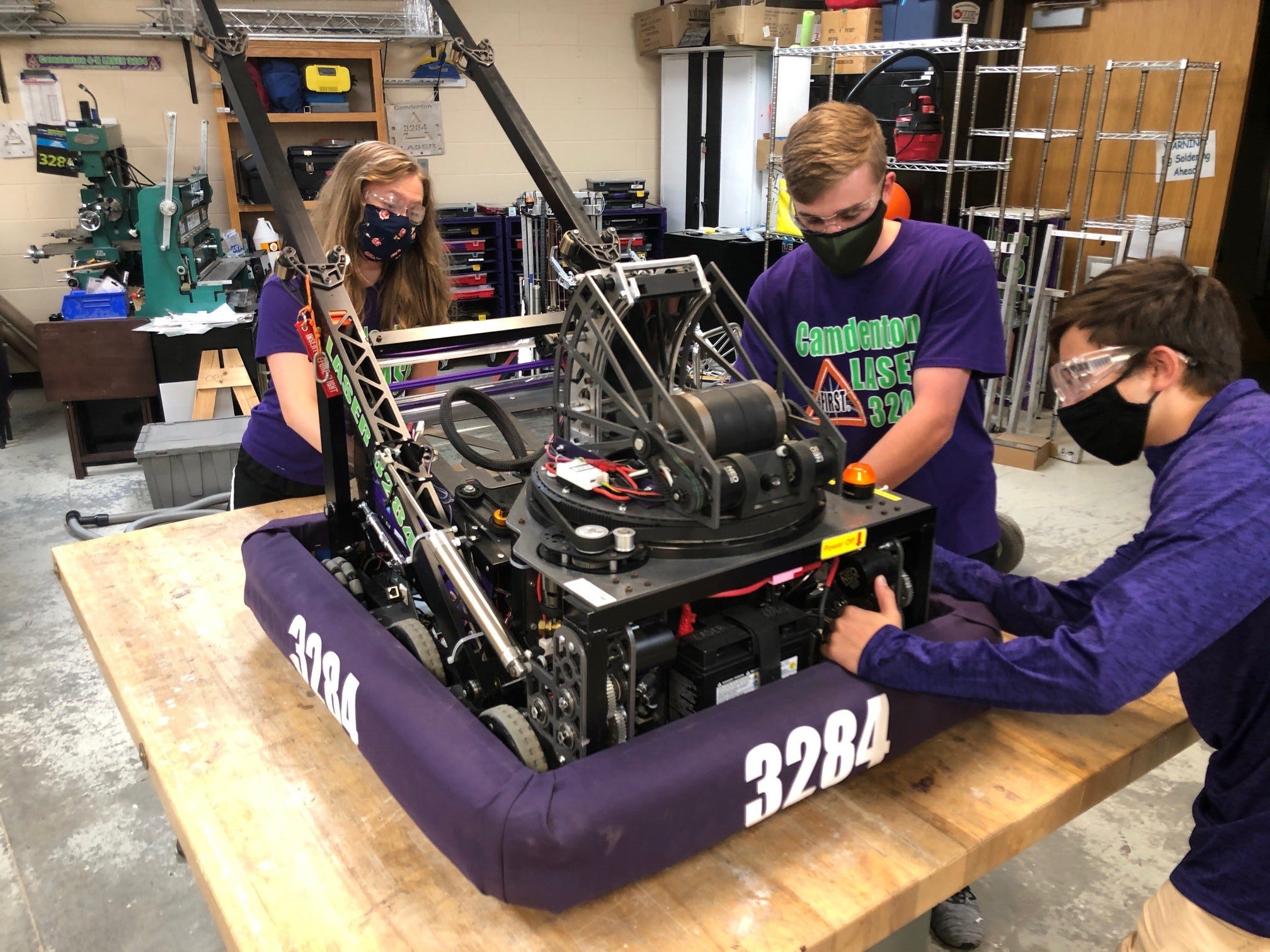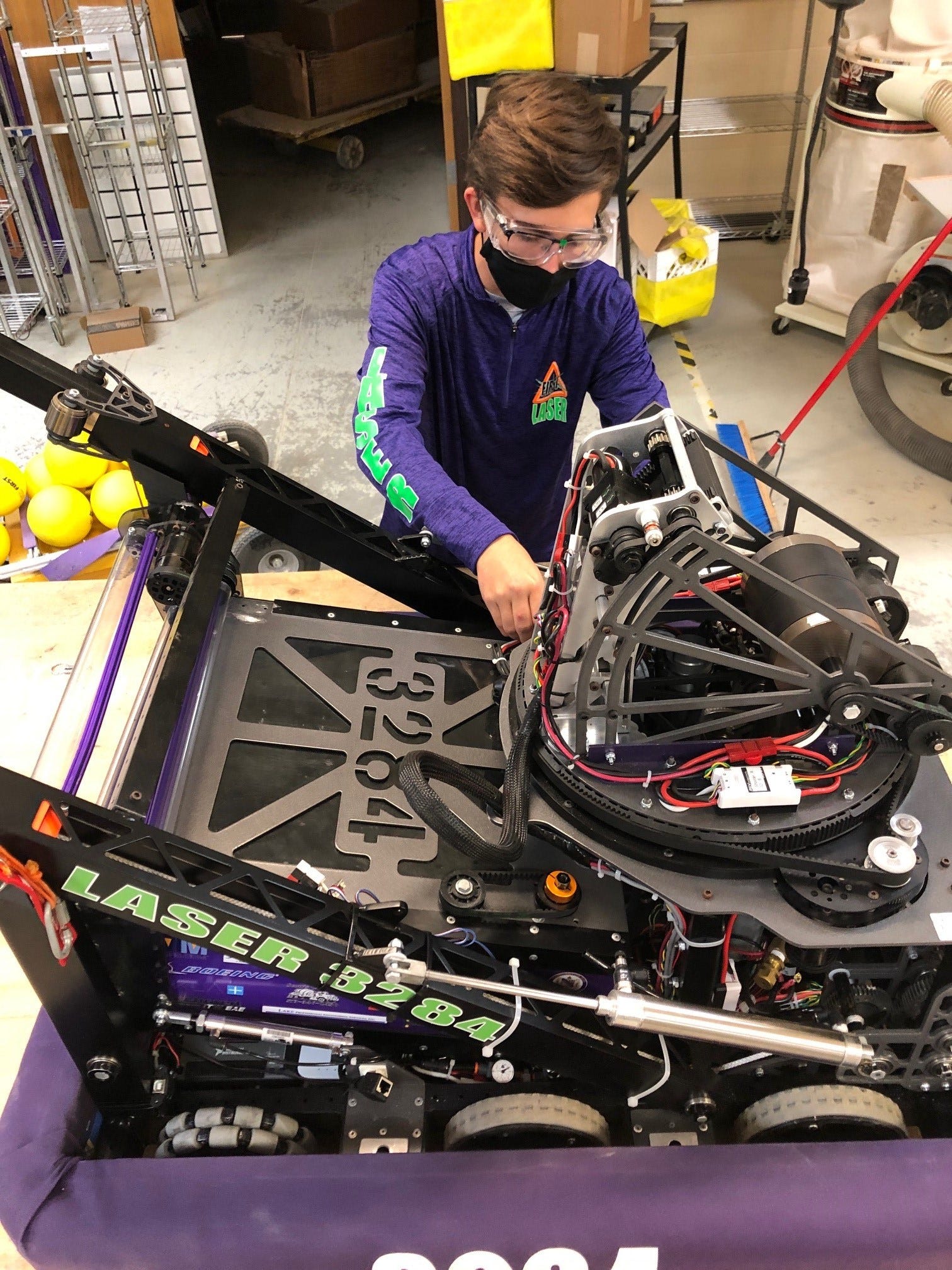
Sherry Comer
- The COVID-19 pandemic has required schools and organizations running extracurricular programs to rethink their approach to education for the 2020-2021 school year.
- FIRST, the global STEM program for elementary, middle, and high school students, has created guidelines for its leagues that schools can follow whether they’re holding remote or in-person classes.
- Some aspects of the program are easier to modify than others; students can brainstorm over virtual tools like Zoom, and schools can break up the duties so that children can work on projects individually.
- But the end-of-season competitions will be more difficult to recreate in the era of COVID-19, says Erica Newton Fessia, FIRST’s vice president of global field operations.
- Visit Business Insider’s homepage for more stories.
In Missouri’s Camdenton R-III School District, three to five elementary school students would usually share a single robot kit when working on their projects for FIRST.
FIRST is the global STEM education program designed for elementary, middle, and high schools in which students build robots, program them to complete missions, and showcase their creations in an end-of-season competition. Nearly 700,000 students in about 110 countries participated in its 2019-2020 season. The organization counts industry giants such as 3M, Apple, Google, Ford, Kleiner Perkins, and Qualcomm among its strategic partners.
But 2020 isn’t like any other school year. Instead, kits in Camdenton are being separated into Rubbermaid containers so that they can be distributed to individual students, allowing them to each work on their own robot rather than sharing parts with their teammates.
When students are working together in person, they’re wearing masks anytime they’re in close proximity. Brainstorming sometimes occurs over virtual video chatting platforms.
Right now, students in the Camdenton district are attending school in person, but Sherry Comer, the after-school services director for the distric, and the rest of the faculty and staff are prepared for that to change at any minute.
"It's definitely changed the scope of how we do things on a regular basis," Comer said to Business Insider.
This is what it's like to run an afterschool program in the fall of 2020, when the looming threat of COVID-19 has forced teachers, administrators, and organizations running extracurricular programs like FIRST to rethink their approach to education.
For FIRST, which stands for For Inspiration and Recognition of Science and Technology, the key to keeping its 2020-2021 programs going is in providing guidance that schools can follow whether students are in the classroom or in front of a screen at home, since schools' in-person attendance varies by region.
The approach that Comer described, dividing the robotics kit among students, is one example of putting these guidelines into practice. FIRST is also moving entirely to remote gameplay for its 2021 FIRST Robotics Competition season, which starts in January.
"Each season we give our student participants the challenge to solve a problem with creative solutions and innovation," Erica Newton Fessia, vice president of global field operations for FIRST, said in an interview with Business Insider. "And so we're now doing what we ask our students to do every season."

Sherry Comer
The early stages of robotics projects that mostly involve brainstorming and talking through ideas translate well to remote environments, Fessia said, since many students are already used to using video chat platforms for remote learning.
Although FIRST is a robotics program and competition, not every aspect of its projects involve programming or building robots. The program also tasks students with raising funds for their team and coming up with a plan for their project as well as designing and marketing their team brand. And some of those elements are much more suited to remote, virtual collaboration.
"In essence, we're really walking them through what it is to be a small robotics startup," said Fessia, who was previously director of global philanthropy at Qualcomm before joining FIRST. "And so they're learning so much more than just how to build a robot."
—Scorpius 6 - FLL Team 44266 (@theEclecTechHs) May 15, 2020
It's the hands-on portion of the program that has changed the most, Fessia said. Instead of students coming together as a team to unpack their kits and build robots together, they may be splitting up the work individually, similar to the scenario Comer, in Camdenton, described.
For example, one solution could involve breaking up challenges — which usually consist of multiple missions that students must program their robots to complete — by distributing specific missions to each student.
Or students may come together in smaller, socially distanced groups rather than gathering as a whole team, Fessia said.
In Comer's district, each child works on his or her own robot and then combines all of their work to run all of their missions as one team. Even though the children may be working together differently, Comer says they're still learning the core collaboration and communication skills that will help them in their future careers.
"Technical skills are fairly easy to reproduce and teach," Comer said. "But sometimes those skills of just being able to sit down with a group of people, come up with a common goal, and work toward that goal is really hard."
—Robo Bears FLL #30898 (@R30898) September 1, 2020
Another challenge for FIRST will be recreating the usual end-of-season competition in which students get to show off their work. When the end of last season was disrupted because of COVID-19, FIRST created a digital showcase so that students could still demonstrate their robots and share their learnings and discoveries, Fessia said.
This season, FIRST has pushed the championship back to summer 2021 to allow for more flexibility when scheduling events given the uncertainly caused by the COVID-19 pandemic. FIRST also announced last month that this season would include new challenges to the FIRST Robotics Competition that focus on remote learning and building.
Although it usually introduces a completely new theme and series of challenges each year, Fessia said that FIRST is using many of the same challenges as it did last year, since the shift to remote learning in March left many US students unable to compete with their robots.
Despite the disruptions, students still learned to address real-world problems when the coronavirus outbreak suddenly interrupted daily life in March and April. Some students in Washington and Michigan, for example, pivoted their efforts toward making personal protective equipment for frontline medical workers in the pandemic's early days.
The goal of FIRST has always been to prepare students for whatever career path they choose, whether it be in STEM or another field. And that may hold truer than ever during the pandemic.
"They're adapting the way they do the work and the way they learn in a way that is going to prepare them for the future," Fessia said. "So in many respects, they're still having that same real world experience that adults are having."

